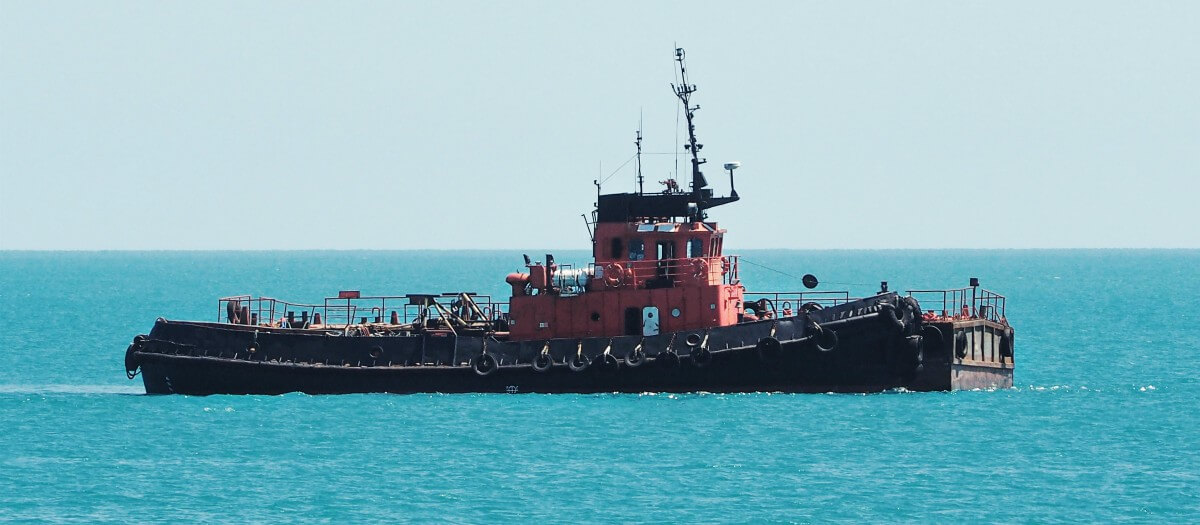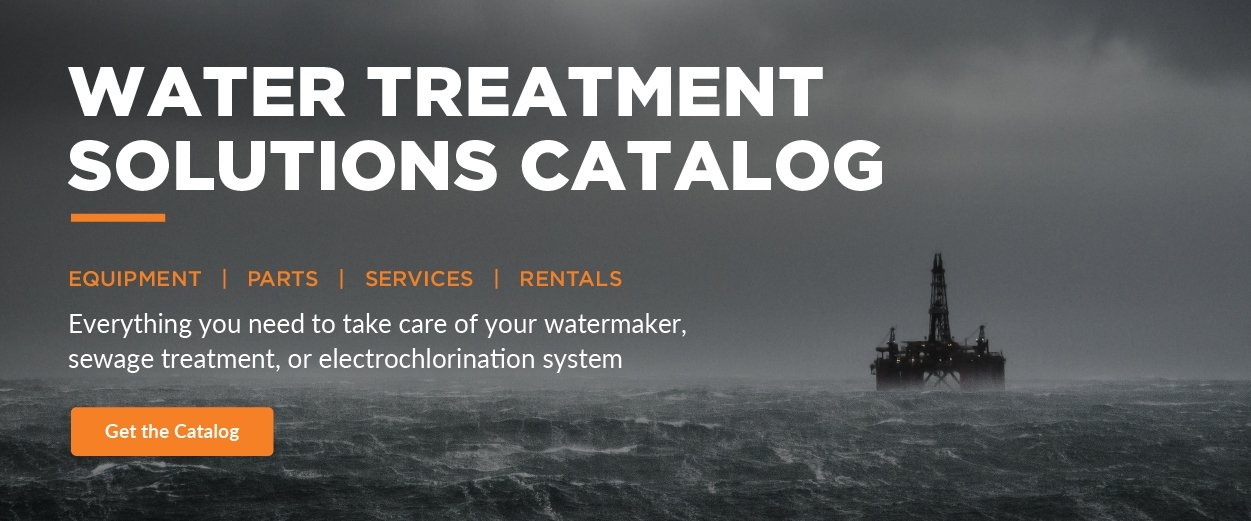
Your marine sanitation device is a hugely important part of your boat, keeping conditions aboard your vessel sanitary, safe, and enjoyable for you, your crew, and your guests. It also helps you treat and dispose of your waste in a way that meets maritime regulations and is good for the environment.
Every part of your sanitation system is important for its optimal function. It’s like a moving puzzle or a ticking clock: With one piece broken, the entire thing isn’t going to work. For your marine sanitation device, if one part begins to fail, it’ll create stress and wear on the other parts of the system. This will lead to premature aging and overall dysfunction.
If there’s one thing you know for sure about marine sanitation, it’s that you don’t want your sanitation system to break. Hands-on management of the resulting sewage sludge won’t be fun—or safe.
Let’s talk about the replacement parts you should keep on hand to keep your marine sanitation device up and running smoothly.
1. Regenerative Blower
Imagine for a moment that your marine sanitation device is a person. You know how important the heart and lungs are for the average human being? Very. The blower is the heart and lungs of your sanitation system. As the lifeline of your marine sanitation device, your blower creates airflow, which allows the biological treatment process in your sanitation device to thrive.
This is because a biological sewage system is dependent upon aerobic bacteria, or bacteria that require oxygen to survive. The blower keeps the bacteria alive—and it also keeps the body of the sewage liquid moving. This, in turn, helps keep the sludge from compacting.
The oxygenating action of the blower also helps the main function of your marine sanitation system. Your marine sanitation device works by exposing the waste to bacteria - who require oxygen - in the aeration chamber. After this, the treated water will move into a clarification chamber, where it’ll still have some residual waste - but at a much lower concentration than in the first chamber. The treated water will clarify as waste drops to the base of that chamber. The separated waste will head back to the aeration chamber to be treated again, and the treated water in the clarification chamber will be moved to the chlorine contact chamber. Here, any remaining bacteria will be killed before the treated water is discharged into the ocean.
As you can see, a properly running marine sanitation device requires a lot of internal motion! Your blower provides the impetus for that motion, and it provides the oxygen necessary for the bacteria in your system. It’s definitely a replacement part for you to keep an eye on over the life of your marine sanitation device.
Telltale signs that your blower might not be working correctly:
-
If your blower is overly loud and sounds like it’s scratching, grinding, or starting to lock up, you’ll likely need to take a look at it.
-
If you open up the body of the system, examine the body of the liquid inside, and notice that it’s not moving, then that could indicate a problem with the blower. Found any liquid in the blower itself? That’s not supposed to happen! If this is the case, you should likely check your blower as well.
2. Discharge Pump
The discharge pump of your marine sanitation device removes treated water from your system. This is important, because there’s likely a constant influx of waste into your sanitation device; if the treated water doesn’t get emptied at some point, sludge inside the sanitation system can overflow, get compacted, and be incredibly hard to treat or manage.
After a while, the sewage levels in your system will rise to a point where everything becomes septic. Then, the discharge leaking from your boat will be toxic and definitely won’t be up to the required discharge standards.
None of that sounds particularly enjoyable. To make sure that this doesn’t happen, take care of your discharge pump.
Telltale signs that your discharge pump might not be working correctly:
-
If you can tell that your marine sanitation device isn’t emptying the way that it should, it’s probably time to check your discharge pump. If your marine sanitation device is overflowing, a good first step might be to go look at your discharge pump. If it’s blocked, then nothing’s getting out!
3. Float Switch
The float switch of your marine sanitation device tells the discharge pump when it should empty the system. If it doesn’t tell the discharge pump to run, the discharge pump won’t empty the sewage system—and then you’ll see adverse effects similar to when a discharge pump isn’t running appropriately.
To avoid stacking of the system and septic overflow, you’ll want to make sure your float switch is behaving as it should.
Telltale sign that your float switch might not be working correctly:
-
When your sanitation system isn’t emptying properly, it might be a problem with the float switch or the discharge pump; check both to see which might need a closer look.
4. Blower Filter
The blower filter of your marine sanitation device helps protect what comes into your blower. Remember when we said that the blower was the lifeline of your sanitation system, and if there was any liquid in it, that was a really bad sign? The blower filter helps keep stuff out of your blower so it can continue doing its job.
Especially if you live or work in an environment where there are always particles or contaminants in the air, your blower filter needs to be ready to do its job. If the blower filter fumbles that important job, then the blower might break, the system will get clogged, and you’ll be looking at steep repair or replacement costs down the road.
Fortunately, because the blower filter is indicative of the livelihood of a blower, if you keep the blower filter in tip-top shape, your blower will likely be fine. It’s a great way to keep tabs on the blower, which might be a little harder to visually assess.
Telltale sign that your blower filter might not be working correctly:
-
If your blower filter is dirty or starting to break down, replace it immediately. Those pieces of broken-off filter could be seriously clogging the blower itself.
Bonus: Do-it-Yourself (DIY) Maintenance Kit
Although a DIY maintenance kit for your marine sanitation device isn’t technically considered a replacement part, it might be a good investment for you to consider picking up for your boat. Think about it: If your sanitation device fails when you’re on the water, it’ll be difficult to call a plumber!
Maintenance kits for marine sanitation devices will vary, but they will likely include some important chemicals to use in dosing your marine sanitation device as well as cleaners and specific-to-sanitation chlorine tablets. You won’t necessarily be able to handle large-scale, intense repairs with just this kit—and that’s OK. Anytime that you’re looking at a major repair, you’re going to want to work with professionals anyway!
However, having one of these maintenance kits on hand can give you peace of mind and help you take care of some minor issues to allay or postpone larger repairs. Ultimately, ensuring that you’re able to handle minor repairs by yourself can give you the freedom that you need to feel comfortable at sea.
The Importance of Finding a Parts Manufacturer You Can Trust
When you’re looking for replacement parts for your marine sanitation device, there are a few things you should consider before you click “add to cart”!
Unfortunately, there are some companies out there that will seek to sell you incompatible, non-compliant, or flimsy parts to increase their profit margins. These substandard products might solve a problem for a short time but ultimately will not be a great long-term solution. It’s not always easy to tell from an online description which parts are good ones, so being able to trust the place you get your replacement parts from is key.
For parts that will be durable and truly solve your problems, you need to find a company that has your best interest in mind. At H2O., we’re proud to create sanitation products that stand the test of time. We’ve even been involved with some tricky marine sanitation device installs that have gotten clients out of tight situations in the past!
Discover the Replacement Parts Needed for Your Marine Sanitation Device Today
Your marine sanitation device works hard to make sure that your time at sea is enjoyable and safe for everyone involved. Each part of that device needs to be working smoothly, or the whole thing might break!
Knowing ahead of time what parts make up your marine sanitation device is a fantastic way to make sure that you’re prepared. Keeping the above backup parts on hand is a great strategy that will give you peace of mind and keep you prepared for anything that might happen.
When you’re looking for high-quality replacement parts for your marine sanitation device, remember to check out the time-tested parts that H2O has for you. Contact our friendly team at your convenience to learn more about pricing, repair services, and more.

